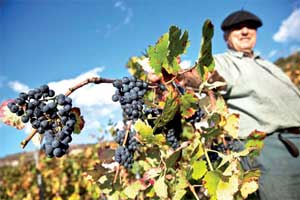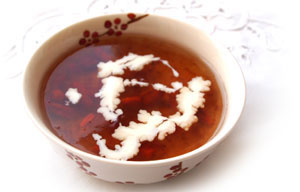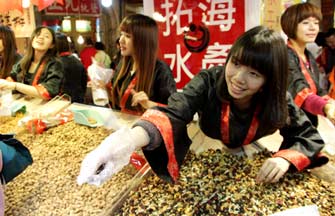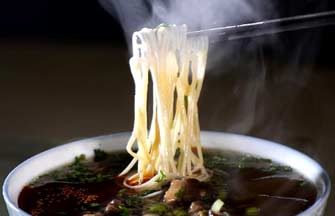
Health, cultural symbolism drive shift from liquor to wine
Liquor's loss can be red wine's gain in China, a study says.
Red wine consumption is set to take off, overtaking France and Italy to become the world's largest market for red wine as an alternative to cereal-based liquor for gifts and company meetings amid the government's frugality campaign, according to the study by wine and spirits trade association Vinexpo.
Chinese red wine lovers downed 1.87 billion bottles of the drink, or in trade terms 155 million nine-liter cases, contributing to a 136 percent increase in the past five years.This has helped China eclipse the traditional wine-producing countries of France and Italy, where red wine consumption fell by 18 and 5.8 percent respectively during the same period.
The reason for the massive surge in China, apart from the growing appetite, is that many Chinese are turning to red wine over liquor, it said.
Tony Dong, general manager of Beijing-based Tianhui trading company, which imports red wine from South Africa, Australia and the United States, also saw that trend.
"There is a tendency that more consumers choose red wine for business meetings and expensive dinners because an increasing number of Chinese believe red wine is healthier than traditional spirits," Dong said.
Amid the government's anti-corruption campaign, high-end liquor has been almost wiped out from lavish dinners, he said.
The driving force behind the market's appetite for red wine is also due to culture, the Vinexpo report said.
"Apart from its virtues with regard to health, which have been widely lauded as an alternative to the impact of excessive consumption of cereal-based spirits, the popularity of red wine is largely due to the symbolic importance of its color," it said.
Guillaume Deglise, CEO of the Bordeaux-based Vinexpo, said the positive association with red in Chinese culture as a whole is the fundamental reason, because the color is always associated with wealth, power and good luck. "Red is the color of luck and good fortune, something that Chinese want to drink to," Deglise said.
The US remains the world's top wine consumer, Vinexpo said, with China in fifth place, a ranking which is not expected to change soon.
Chinese interest in wine has also been reflected in purchases of Bordeaux vineyards and chateaux. Earlier reports said that an average of one Bordeaux chateau per month has been sold to a Chinese investor in recent years. Last year 50 vineyards in Bordeaux were bought by Chinese.
"People who are buying Bordeaux chateaux want to service the market because domestic production cannot apparently meet the growing appetite in China," said Li Demei, a wine consultant and a lecturer at Beijing University of Agriculture.
The decrease in European consumption came amid an increase in shipments to China, with the country importing seven times more wine in the past five years, the report said.
According to Chinese Customs, red wine imports from January to October rose 31.4 percent to 311 million liters and the value of these imports rose 68.2 percent to $1.67 billion.
But more than 80 percent of the wine consumed in the country is produced domestically.
Also popular:
|
 |
 |

2013 Chinese New Year |

Hidden dragons, crouching tigers |

Soap beans, silver ears and peach gum |

Special:Winter Solstice |

Qingdao's snacks prepared for Spring Festival celebrations |

Crowds pack historic Taipei New Year market |

Lanzhou beef noodles : a way of lifestyle |

3th "Street Food City" event held in Vancouver |